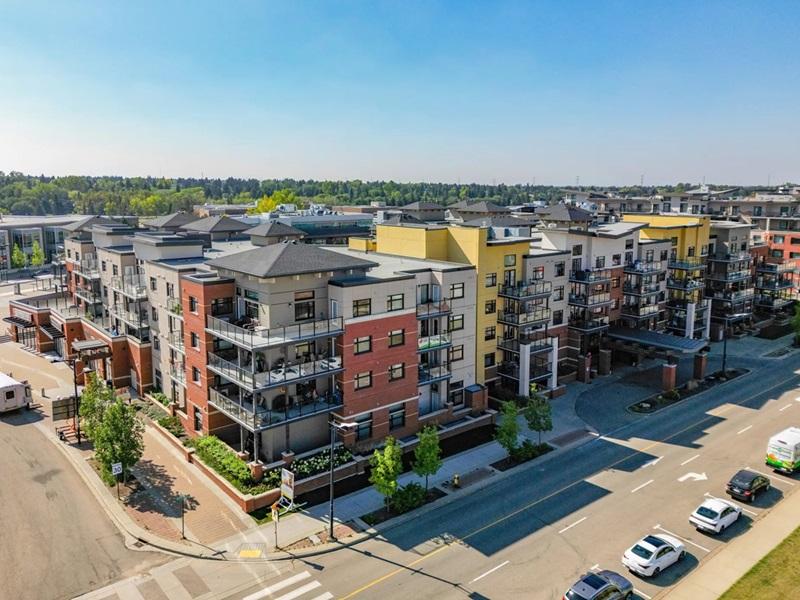Q1 2023 is over; here are seven housing-related initiatives we have three-quarters of the year to figure out.
1. Finding the meaningful Missing Middle, the one that will move the needle
The City of Toronto gave the green light for building garden suites as a way to expand housing options in neighbourhoods.
The approval of garden suites in 2021-'22 paired with the approval of laneway housing in 2019 symbolizes this expansion. Unfortunately, these relatively small moves – that eventually add only one residential unit per property – received a lot of opposition.
That really makes you wonder: how can we see a real change in the housing market if these harmless, small-scale typologies got such a massive pushback?
This past summer city council voted in favour of waiving development charges for multi-plexes with four units or less. All second, third and fourth units are now being welcomed.
However - a five-plex development will be bound to pay development charges for all five units (not just the one above the fourth unit), which practically ensures no five-plexes (and probably no six-, seven- or eight-plexes) will be built anytime soon.
What is missing in the Missing Middle discussion?
The focus moving forward will need to be building more four- to six-storey low-rise apartment buildings.
Yes, bigger than a house-form, and it will probably require the consolidation of three or more properties to achieve the desirable scale, but the good news is that it could bring 20, 30 or even 40 units to our neighbourhoods at once.
As the public surges into this uncharted territory, it is pertinent that we change the discussion surrounding “housing aesthetics” in our neighbourhoods. Letting go of the "traditional house" look and feel will help us make room for real and sustainable housing solutions.
2. Reshaping mid-rise buildings
Toronto's approach to mid-rise building design started to shift when the city approved the Danforth Avenue Design Guidelines in April 2022. One of the most important takeaways from these guidelines was the relief on the rear angular plane as a tool to achieve articulation and transition.
It's been over a decade since Toronto published the Mid-rise Building Design Guidelines and angular planes as a prominent design tool. Angular planes create buildings that are difficult and expensive to build, and deliver fewer units to the market because of their particular design.
Alternative design tools for achieving "articulation" and "transition" exist and now is the time to welcome them with open arms.
3. Expanding transit networks
We have discussed, debated and considered changes for the Ontario ("Relief") Line for decades! We finally got to see the change coming to life in 2022 with the beginning of construction and yet people still question if the Ontario Line is needed.
Toronto's current transit infrastructure and systems are lacking. This general lack massively impacts ridership numbers as fewer people view it as their best option.
Weak transportation systems deepen marginalization and isolation, and push more people to drive. It is time for Toronto to play some serious transit catchup in 2023 and onward.
4. Being less car-dependent
We can’t speak to transit without the main purpose of it: being less dependent on cars. The City of Toronto waived parking minimums in residential buildings back in 2021.
While this is a step in the right direction, it is a small ripple in the deep and vast pond that is automobile dependency.
Roughly three years ago, city council set an ambitious target to have every ride within the city be made by public transit. Although this target was projected as a five-year plan at the time, it’s hard to determine the progress and success of this target.
There’s more to be done when it comes to our obsession with cars for daily use: 83 per cent of Torontonians (the Greater Toronto Area) use their car daily.
This is in comparison to 30 per cent in New York, 37 per cent in London, 27 per cent in Amsterdam and only 12 per cent in Tokyo.
People believe they can’t live without their cars. We need to change that belief with better urban planning and urban design.
5. Implementing the pre-application consultation process (PAC)
The pre-application consultation process (PAC) became mandatory in Toronto this past fall (coming into effect on April 3, 2023). This move will ensure a more structured approach when establishing project expectations and implementation.
All material from pre-application processes that were previously confidential is now open and accessible to the public. Meetings that were once considered "optional" or an "informal chat" are now required, consistent and openly circulated.
The new pre-application consultation process takes some of the weight off the formal rezoning process and hopefully will make it smoother and shorter.
This will, however, make the PAC stage itself more sensitive and remove the opportunity to have any conversation with staff as a professional dialogue.
What was once a space for more casual conversation amongst professionals will now be filtered and be brushed in politics.
6. Navigating change with the committee of adjustment
The recent updates to Bill 23 completely reinvented the committee of adjustment.
With third-party appeals no longer possible, cases will run smoother with a smaller chance of derailment. It will be refreshing to see this ease reflected in quicker and more succinct action being taken within the city.
Does it mean it will be harder to get more housing approved at the committee? Only time will tell.
7. Exploring the new development and growth division and HousingNOW … with a new major!
A major part of former mayor John Tory’s 2022-'26 re-election campaign was his promise to get more affordable housing built in Toronto as quickly as possible.
Tory’s ambitious plan addressed a wide range of the housing spectrum and gave Torontonians some hope, perhaps.
The sudden departure of Tory from office leaves the city wondering what the future holds for the Housing Action Plan.
With no word on the new department since the elections in October 2022, and no units breaking ground from the HousingNOW program, Torontonians are more or less in the dark about whether the plan is still on.









